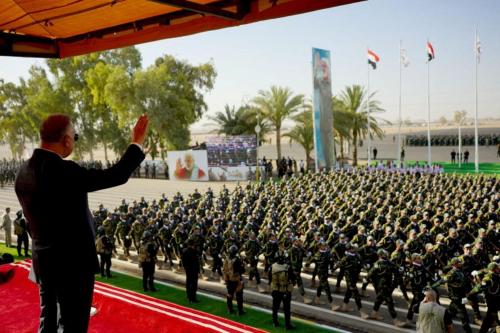We face huge challenges in Afghanistan, to be sure. No one watching the news, or hearing President Barack Obama’s sober tone on Dec. 1 at West Point, or listening to testimony from Gen. Stanley McChrystal and Ambassador Karl Eikenberry last week, could doubt that basic reality. But in these serious, difficult times, it is worth remembering all the things that actually are working in our favor in Afghanistan now.
First, Afghans want a better future for themselves. This is true for Afghans in their own country, as well as for the Diaspora of Afghans around the world — many of whom have moved back home to help build a new country, others of whom stand ready to invest, trade and assist in other ways.
Most Afghans reject war. They also reject the Taliban, by 90 percent or more in most polls. Among the majority of the Afghan people who are not Pashtun, in fact, support for the Taliban is virtually zero. Even among the Durrani, one of the two main Pashtun tribal groupings, support for the Taliban has been limited (the Taliban’s main support has come from the Pashtun Ghilzai tribes).
The Taliban is not a popular insurgency. It is in equal parts a narco-terrorist organization willing to use drug smuggling to finance its operations, an extremist Islamist movement with an intolerant view of nonbelievers and a backward view of the role of women, and a ruthless organization willing to use brutal violence against innocent, law-abiding citizens to impose its version of Islam. Yes, it has achieved impressive discipline in its ranks in some ways, and battlefield momentum as well, but it has no positive vision for the country — and Afghans know it.
There are also many good and committed “average citizens” in the country today. In Kandahar City citizens are telling authorities about the locations of up to 80 percent of all improvised explosive devices before they go off, allowing security forces to defuse them. This high percentage, higher than ever witnessed in Iraq, further suggests that our efforts to quell the Taliban may have found unexpected support from the general population in one of the Taliban strongholds, support that a counterinsurgency can build upon. Progress is apparent in other places too. In the town of Nawa in Helmand Province, for example, an infusion of U.S. forces in 2009 has turned a previously lawless area held by the Taliban into a relatively secure area where ordinary people can begin to get back to their daily lives.
Second, elements of the Afghan security forces are improving fast. This is most true for the army. With NATO’s International Security Assistance Force focused intently now on proper training and mentoring, the building of Afghan security forces that can protect their own people should accelerate.
Third, life in Afghanistan has actually improved somewhat compared with the recent past. Yes, the progress is uneven, and the poor remain very badly off. But overall the economy, education, healthcare and similar indicators are moving more in the right direction than the wrong one. Material progress has contributed to a reservoir of goodwill among the Afghan people toward those in authority. President Karzai, the United States, and NATO all still enjoyed at least 60 percent support from the population as of summer 2009 — far better than the United States has enjoyed in Iraq. This popularity number is fragile, and uneven among different groups, but we do have some advantages in how the Afghan public views the situation nonetheless.
Fourth, NATO in general and the United States in particular know how to carry out counterinsurgency missions better than ever before. Troops are experienced in the art of counterinsurgency and knowledgeable about Afghanistan. We also have excellent commanders, starting with Central Command Combatant Cmdr. Gen. David Petraeus and Gen. McChrystal, who directs both the NATO forces and the separate, U.S.-led counterterrorism force carrying out Operation Enduring Freedom there. Commanders at much lower levels of authority, the ones who execute the strategy day in and day out, are also seasoned and quite smart in the ways of this type of warfare. The importance of good leadership in counterinsurgency is very significant, and our strengths in this area are a major asset.
Fifth, enough troops are now on the way. Until now, on the ground, troop shortages prevented combined Afghan and NATO forces from securing many districts, towns and villages. Worse, it left troops stalemated in dangerous situations over extended periods of time because they did not have the capacity to seize land and sustain control. It left NATO forces relying too heavily on air strikes with all their potential to cause accidental deaths of innocents (a policy that McChrystal has changed; air strikes are generally allowed now only if NATO troops are in direct peril). And it left Afghan citizens who cooperate with NATO and their government vulnerable to reprisal. Only in 2009 did these realities finally begin to change; only in 2010 will we achieve reasonable overall force rations.
To predict success outright would be to go too far. But I honestly believe that, setting our sights at a reasonable level, the odds are with us in this important mission.



Commentary
Op-edIn Afghanistan, The Odds Are With Us
December 14, 2009